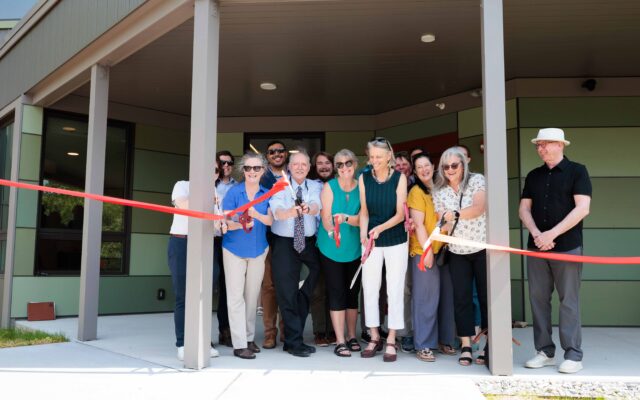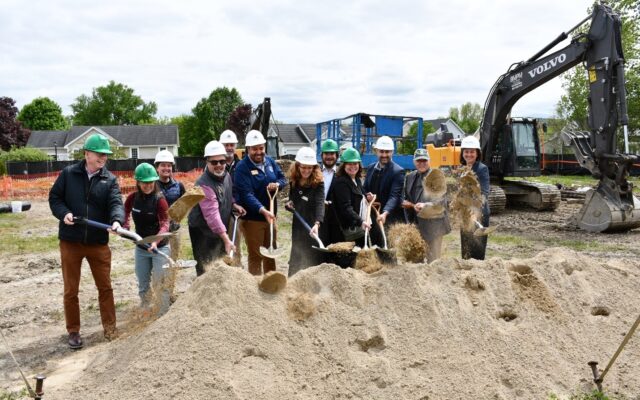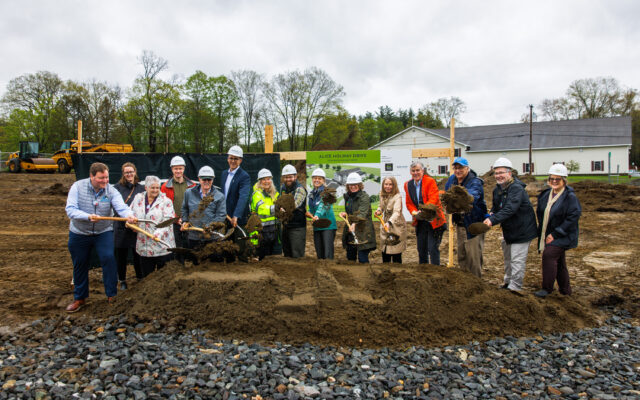This column was written by John Vogel and originally published by Valley News on June 15, 2021. John is a recently retired clinical professor from the Tuck School of Business at Dartmouth and is co-chair of the Evernorth Board of Directors.
For affordable housing advocates, this is a time of great opportunities and difficult challenges. Thanks to the CARES and American Rescue Plan acts, financial resources available for affordable housing in Vermont and across the country have skyrocketed.
In a typical year, the Vermont Housing and Conservation Board receives $12 million to $15 million for land conservation and affordable housing. This year, the board will receive $168 million, with $144 million targeted to affordable housing projects with a priority on transitioning Vermont’s homeless population out of hotels and motels.
As a sophisticated financial intermediary, the Vermont Housing and Conservation Board has figured out innovative ways to boost the supply of affordable housing for low-income Vermonters. It also strives to increase the supply of housing for people who are just above the income level for federal housing programs.
In most affordable housing projects, the board leverages its own investments with 9% low-income housing tax credits, which provide 50% or more of the project cost. Since Vermont receives only a limited allocation of 9% credits, this year the Housing and Conservation Board and the Vermont Housing Finance Agency have encouraged developers to use 4% credits, and are bridging the financial gap with federal stimulus money. These 4% credits also come with tax-exempt financing, an otherwise underutilized resource.
The 10th Cavalry Apartments project in Colchester is a good example of this kind of creativity.
Saint Michael’s College agreed to sell three historic buildings to the Champlain Housing Trust and Evernorth (formerly known as Housing Vermont). These buildings were constructed in 1904 as barracks for the African American members of the 10th Cavalry Regiment of the U.S. Army. Saint Michael’s College acquired them in 1964 and used them as dormitories until about three years ago.
The Champlain Housing Trust and Evernorth will gut and convert these currently empty buildings into 60 units of affordable housing. Forty-eight units will utilize the 4% credits, which mandates they must be rented to families making less than 60% of median income. The remaining 12 units will be rented to people making up to 80% of median income.
Chittenden County desperately needs this housing. Without the extra resources from the federal government and the creativity of the Vermont Housing and Conservation Board, it would have taken years to obtain sufficient financing.
Multiple challenges
With affordable housing, there are always significant challenges.
During the pandemic, many lumber mills shut down. Recently, as demand surged, building materials like lumber have quadrupled in price. Disruptions to supply chains, especially from China and Canada, have created shortages in items such as windows and doors. So, while affordable housing developers suddenly have unprecedented resources, it will be difficult build rapidly and keep down the costs.
Ingenuity will help. Converting existing warehouses, offices and motels into housing is one strategy that might work.
The Vermont Housing and Conservation Board recently funded the conversion of a former John Deere dealership in Rutland to nine new homes. Acquiring market-rate units from landlords who suffered during the pandemic and making them permanently affordable is another possibility. In the Upper Valley, the board used some of these extra dollars to help The Haven expand capacity, improve conditions for social distancing and upgrade ventilation.
The affordable housing industry has also long been challenged by speculators who convert homes intended for low-income families into upscale housing. Over time, neighborhoods that were affordable, like the South End in Boston, change and gentrify. All that protects low-income families from displacement are government regulations and covenants. Over the last 75 years, speculators have sought and sometimes found ways to get control of affordable housing and either convert it to market-rate housing or demand large payments for keeping it affordable. Unfortunately, that seems to be happening again, spurred on by the rapid rise in housing prices in many markets.
Loophole at year 15
Since 1986, almost all the affordable housing built in this country was financed with low-income housing tax credits. The tax-credit program specified that investors, generally banks, would receive tax credits over 10 years, and after 15 years they would be able to exit the investment. In the 15th year, investors in projects sponsored by nonprofit organizations were expected to pass the ownership to the nonprofit sponsor, who would assume the existing debt on the property and pay a nominal amount to cover the investors’ taxes.
Investors did well under this arrangement. They received reasonable, predictable returns plus credit toward their community reinvestment obligations.
However, in recent years, a few companies have used lawsuits and other tactics to seize control at this 15-year transition point in hopes of realizing windfall profits.
WBUR radio investigated this problem and aired a segment in April that recounted a story about Ashwood Court Apartments in Bellevue, Wash. According to WBUR, Boston Financial purchased the limited partner interests in this affordable housing development for seniors. DASH, the nonprofit developer and manager, expected that the apartments would be turned over to it at the end of 15 years, at a nominal price of $69,000, so that it could continue to serve these very low-income seniors.
Instead, according to Kim Loveall Price, executive director of DASH, Boston Financial “kept threatening that they were going to force a sale.” Her recollection is supported by an internal Boston Financial email from 2016 in which a Boston Financial vice president wrote to a senior vice president: “Even though they’re a small non-profit, they might be able to just pay us off to get rid of us.” And that is exactly what happened. DASH had to borrow $300,000 to get rid of Boston Financial.
As Loveall Price recalled, the payment hit especially hard when she saw an opened jar of gravy and some lettuce on the sharing shelves. “These seniors are so poor that they share half-eaten food,” Loveall Price said. “And I’m giving (Boston Financial) $300,000 instead of being able to help with food security.”
In another case, Alden Torch Financial LLC, described in Forbes magazine as “the largest affordable housing asset management platform in the industry,” is suing the nonprofit Tenant Development Corp. for $34 million — the difference between the value of 185 apartments in the South End of Boston as market-rate housing and what they are worth as affordable housing.
In the short term, Congress and the IRS can fix this problem by clarifying what happens at the end of the 15-year term. Meanwhile, opportunists will continue to scour the market for openings. When the market value of apartments is significantly greater than their value as affordable housing, some people will try to take advantage of that difference. Putting ownership in the hands of nonprofit organizations helps to mitigate this risk, but is not a cure-all. Sometimes, affordable housing organizations need help from state agencies and the federal government.
Vermont needs more affordable housing. A study on the Vermont Housing and Conservation Board website, published in March, states that there “are only 49 affordable and available rental homes for every 100 extremely low-income households” in Vermont. The additional resources from the federal government should help. Vermont, however, needs to be vigilant about protecting its existing affordable housing from threats like the loopholes in the transfer process at year 15.
At this moment, with the spotlight on affordable housing, three questions need to be carefully answered: How should Vermont extract the maximum benefit from these enhanced financial resources? How do we ensure that, as housing prices continue to rise, our affordable housing remains affordable? Finally, what kind of housing can we create for the 2,296 homeless adults and 425 children currently living in 1,964 hotel rooms?
John Vogel, of Norwich, is a recently retired clinical professor from the Tuck School of Business at Dartmouth College, where he taught real estate and nonprofit management. He is co-chair of Evernorth, which develops, manages and finances affordable housing and community development in Maine, New Hampshire and Vermont.
Link to the full column can be found here: https://www.vnews.com/Column-Affordable-Housing-at-a-Crossroads-40979710




